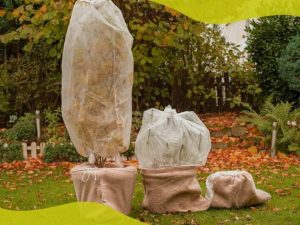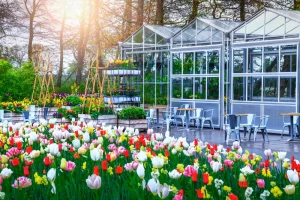Photoperiodism and the Relationship Between Spring Flowers and Day Length
Short day Poinsettias
Have you ever wondered why it’s hard to get a poinsettia to bloom again? Or have trouble with bolting lettuce, arugula or cilantro in the summer garden? To better understand the habits of perennial flowering plants Crabapple explains that we must take day length or ‘photoperiodism’ into account.
Some flowers habitually bloom in fall, as the days are getting shorter on the way to the shortest day (and the longest night) of all, December 21, the Winter Solstice. Fall-blooming goldenrod and chrysanthemums are famous for this, as are the well-known Christmas cactus and poinsettia. After the Winter Solstice, the days slowly start getting longer again.
Long day Foxgloves
Other perennials reliably flower in spring, as the days are getting longer (and the nights are getting shorter) on the way to Midsummer. Foxgloves and peonies are characteristic of this time of year. These are termed “short day” plants. After the Summer Solstice, the days slowly start getting shorter again as the Wheel of the Year turns.
Plants respond to night length in direct ways. Photoperiodism is the term used to discuss plant responses to day length, or more accurately, night length. “Long day plants” (like clover and garden pinks) bloom as the days get longer and when the nights are short.
Short day Chrysanthemum
After Midsummer, these plants stop blooming and other plants (like asters) begin to bloom. These are called “short day plants” because they are triggered to flower as the days grow shorter (after the Summer Solstice) during late summer and fall. Well-known as a Christmas flower, the poinsettia develops its showy bracts as there are a long, unbroken periods of darkness each night and year approaches the Winter Solstice.Day neutral strawberry
Still other plants are “day neutral plants” because they are less responsive to the length of the dark period. Spring and Fall Equinoxes are the midway point of the solar year. For example, tomatoes, cucumbers and strawberries are day neutral.
The florist industry can control flowering by providing supplemental lighting or sun-shielding darkening covers in greenhouses where night-length-sensitive flowering crops are being grown.
For more information, ask your Crabapple Landscape Expert about any landscape maintenance questions you may have.








